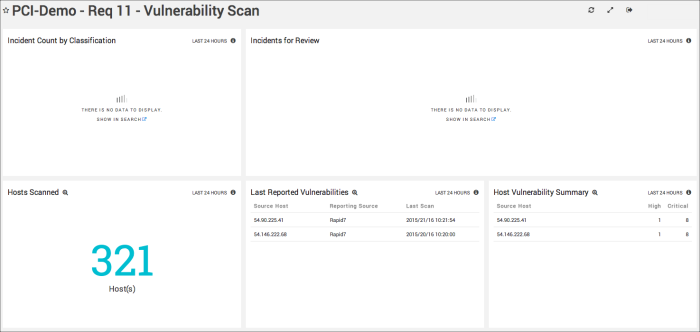PCI Dashboards
This logical grouping of issues, events, or activities makes it easy for an organization to make sure they're continuing to comply with each requirement, and remediate any problems that could present a violation.
Sumo Logic based the PCI app on PCI DSS Requirements and Security Assessment Procedures, Version 2.0. Requirements one through 11 have Dashboards custom-built to help you zero in on data relevant to each requirement. (Requirement 12, Maintain a policy that addresses information security for all personnel, can't be measured through log data, there is no Dashboard.)
The requirements are as follows:
- Requirement 1: Install and maintain a firewall configuration to protect cardholder data.
- Requirement 2: Do not use vendor-supplied defaults for system passwords and other security parameters.
- Requirement 3: Protect stored cardholder data.
- Requirement 4: Encrypt transmission of cardholder data across open, public networks.
- Requirement 5: Protect all systems against malware and regularly update anti-virus software or programs.
- Requirement 6: Develop and maintain secure systems and applications.
- Requirement 7: Restrict access to cardholder data by business need-to-know.
- Requirement 8: Identify and authenticate access to system components.
- Requirement 9: Restrict physical access to cardholder data.
- Requirement 10: Track and monitor all access to network resources and cardholder data.
- Requirement 11: Regularly test security systems and processes.
While some facets of these standards are based on policies set outside of your log data, Sumo Logic works to monitor data-driven aspects of the standards. For example, requirements that need audits of individual actions can be monitored through Sumo Logic's app.
PCI Posture Overview Dashboard
Think of the Posture Overview Dashboard as a high-level look at the state of failures currently occurring, as well as a chart that displays the number of failures that occurred over the past seven days. These failures are clearly labeled with the PCI Requirement that could be violated by the failures.
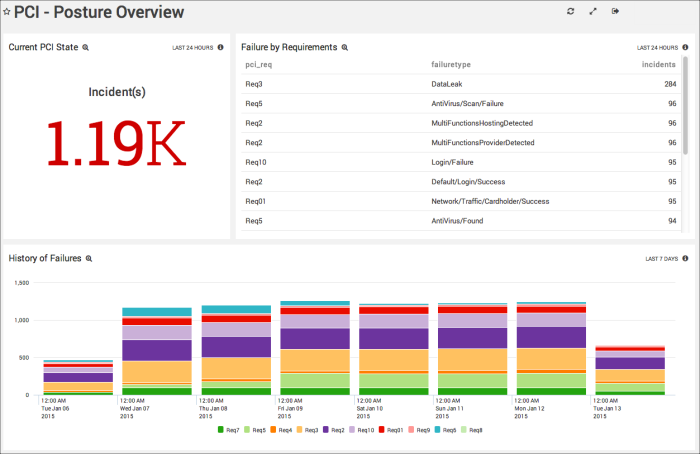
Current PCI State. Displays a single, color-coded value associated with the number of failures that have occurred over the past day.
Failures by Requirements. Shows the number of failures by PCI Requirement.
History of Failures. Displays a chart of all failures that have occurred over the past week.
PCI Requirement Compliance Status Dashboard
The PCI Requirement Compliance Status Dashboard provides a high-level view of the number of outstanding incidents for each PCI requirement.
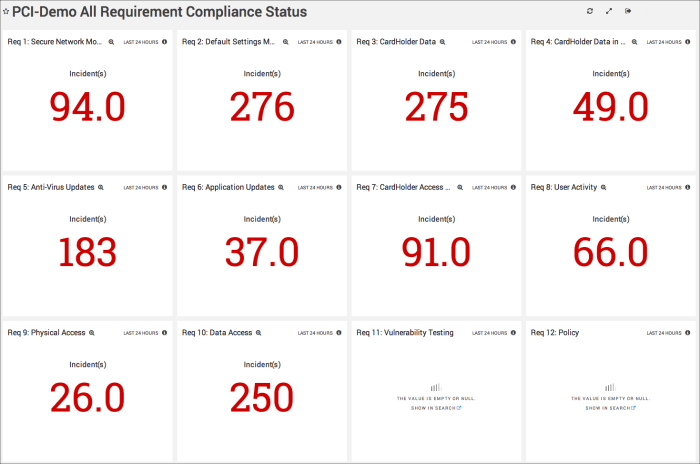
PCI Requirement 1 Dashboard
PCI Requirement 1 Secure Network Monitoring Dashboard reports the state of your organization's compliance of having a firewall installed and configured to properly protect cardholder data.
Information relating to this requirement can be found in network activity and events, such as inbound and outbound cardholder activity, as well as network configuration changes.
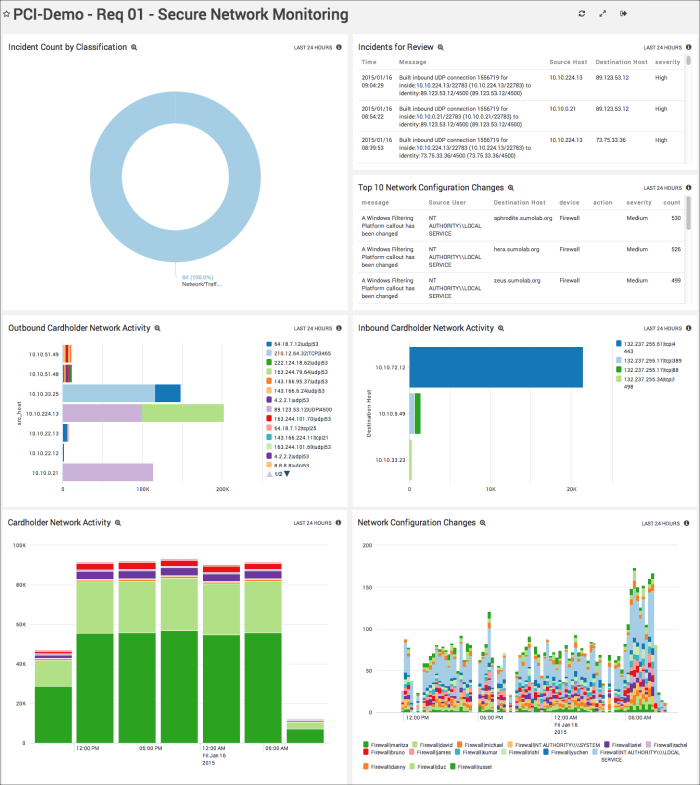
PCI Requirement 2 Dashboard
The PCI Requirement 2 Default Setting Monitoring Dashboard provides information any use of vendor-supplied or default system passwords and security parameters in your organization.
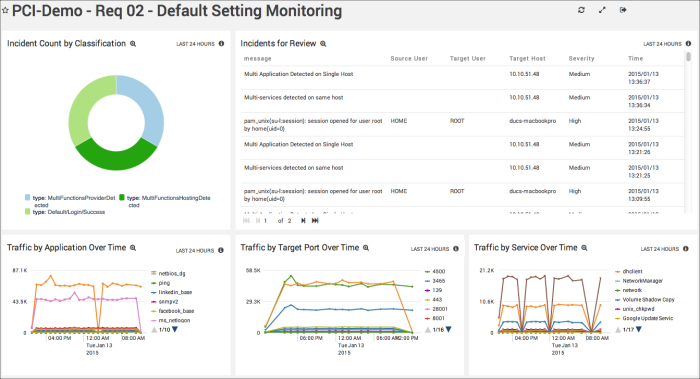
PCI Requirement 3 Dashboard
The PCI Requirement 31 Protect Stored Cardholder Data Dashboard details your compliance for protecting stored cardholder data.
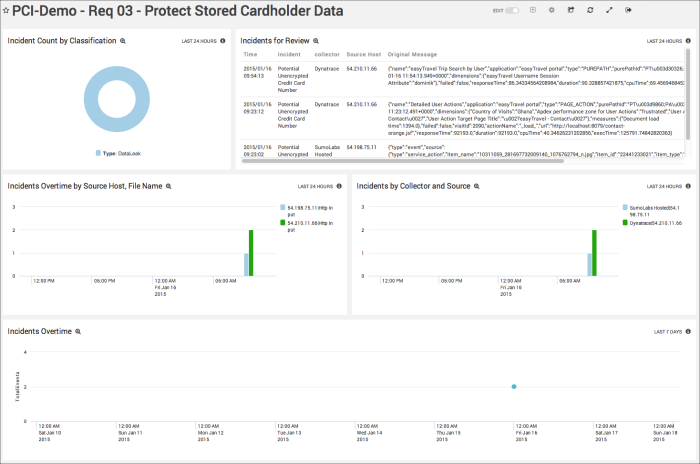
PCI Requirement 4 Dashboard
PCI Requirement 4 Dashboard reports the state of your organization's encryption of cardholder data. Panels in this Dashboard look at incidents generated by firewalls, for example, or other hosts or ports that handle the flow of data that should be encrypted.
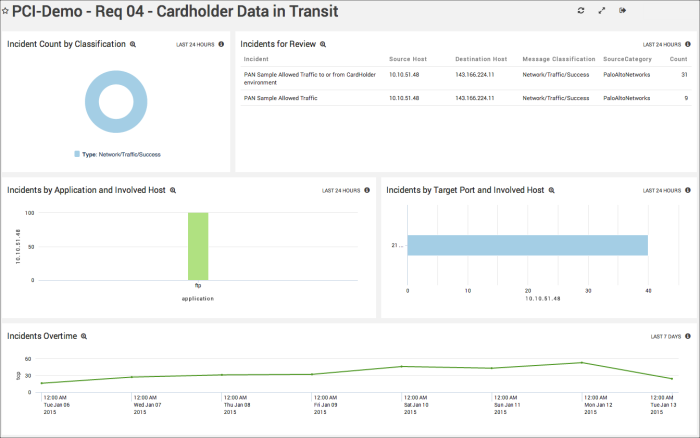
PCI Requirement 5 Dashboard
PCI Requirement 5 Anti Virus Updates Dashboard makes sure that anti-virus software is regularly updated, and also looks at any anti-virus threats to servers, as well as failed anti-virus updates.
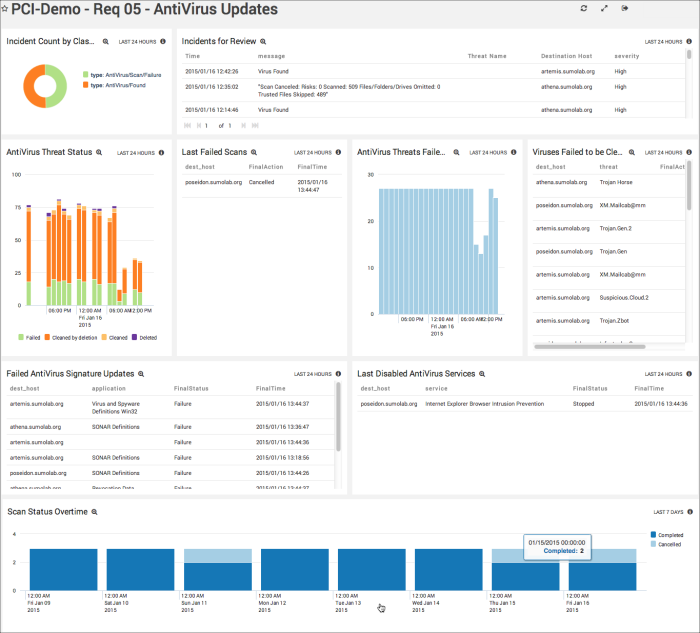
PCI Requirement 6 Dashboard
PCI Requirement 6 Application Updates Dashboard looks at the states of application upgrades that have occurred across your deployment. Critical vulnerabilities are also monitored.
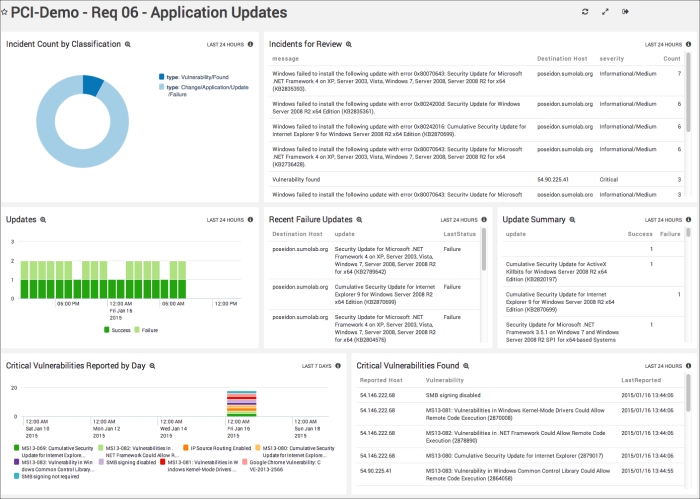
PCI Requirement 7 Dashboard
PCI Requirement 7 Cardholder Data Access Monitoring Dashboard helps you verify that your organization is restricting access to cardholder data only to those with an explicit purpose. The Dashboard contains a number of Panels that watch for any attempts to access environments that store cardholder information, so you easily can see who is attempting to gain access to the data.
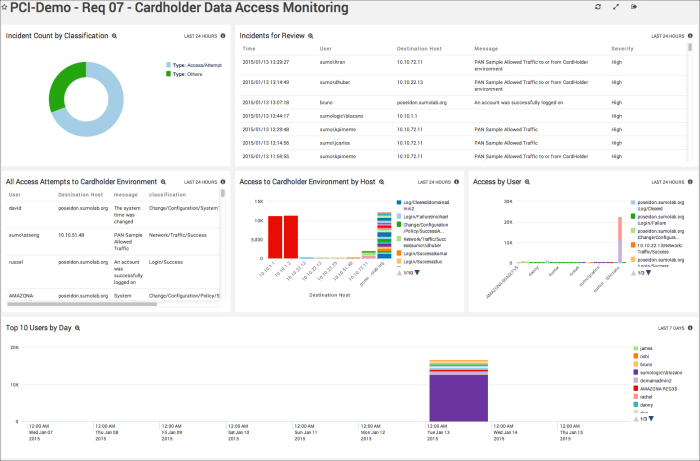
PCI Requirement 8 Dashboard
The PCI Requirement 8 User Activity Dashboard helps you comply with each user having his or her own unique ID. Panels look at account creation/enablement, account deletion/disablement, and password changes. Additionally, you can view a chart that displays a summary of the overall number of user account creations/deletions over a week.
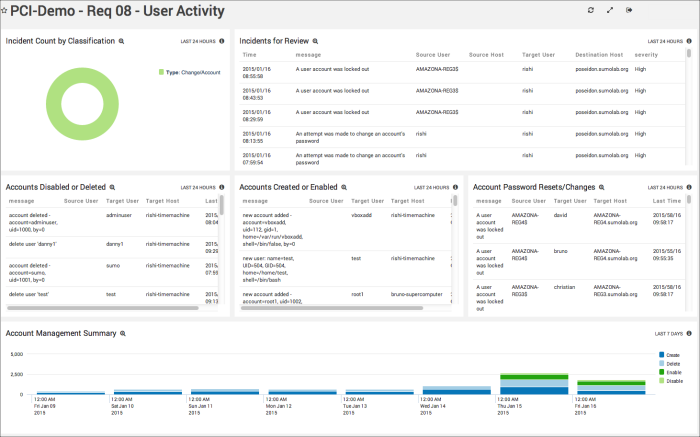
PCI Requirement 9 Dashboard
The PCI Requirement 9 Physical Access Dashboard contains Panels that check for any violations of physical access to machines that contain cardholder data. Each access request is logged and displayed by user name.
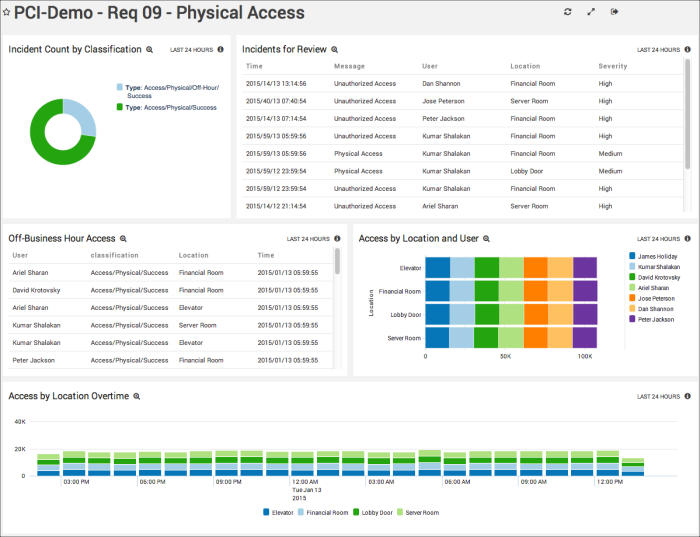
PCI Requirement 10 Dashboard
The PCI Requirement 10 Data Access Dashboard contains Panels that track each time a network resource is accessed.
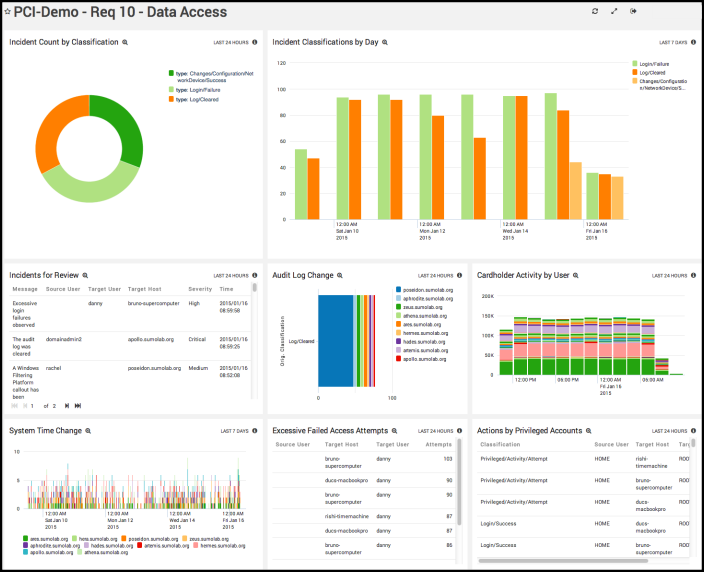
PCI Requirement 11 Dashboard
The PCI Requirement 11 Vulnerability Scan Dashboard helps you comply with the requirement to regularly test security systems. This Dashboard gives you a look at the number of hosts scanned over the past day, along with any vulnerabilities that need to be addressed.
